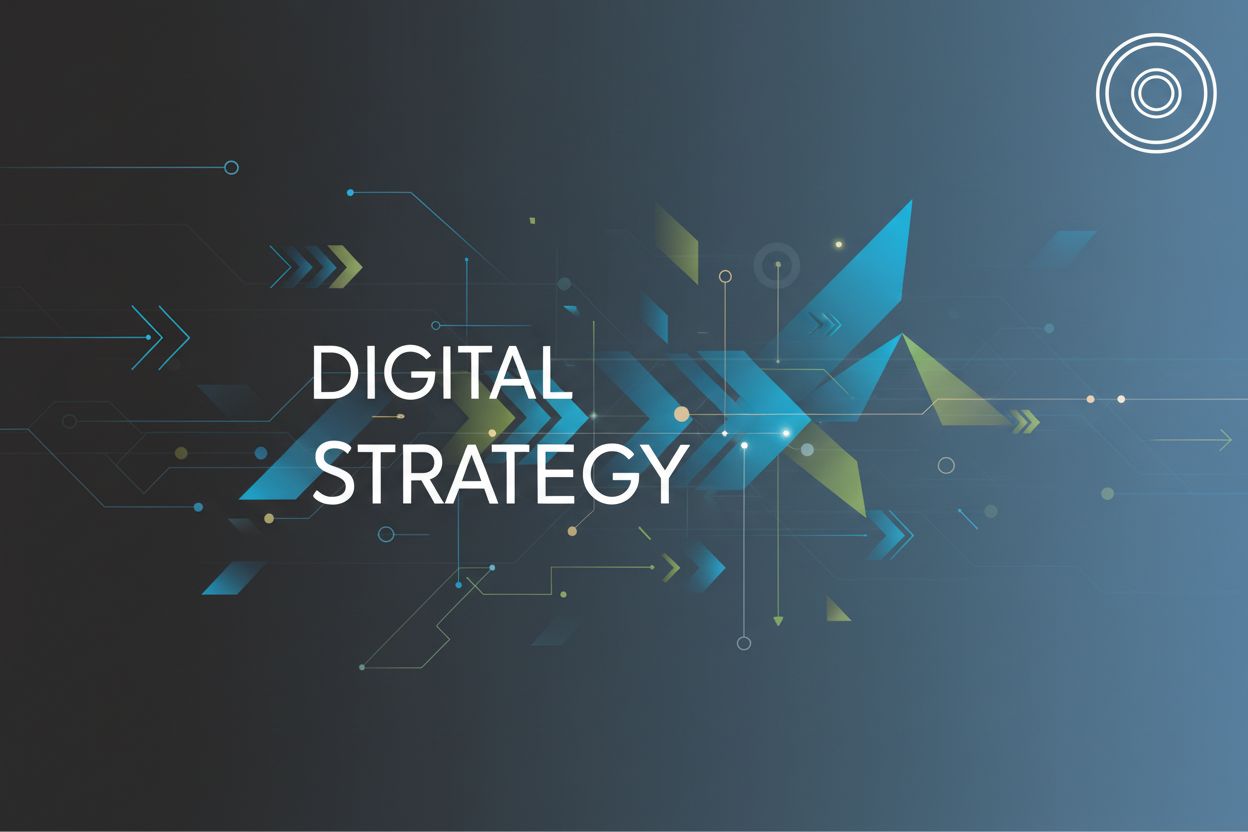Engaging Consumers Through Interactive Advertising in the Digital Age
TL;DR
The Evolution of Advertising: From Passive to Interactive
Remember those old banner ads? You know, the ones you'd reflexively block out? Advertising's come a long way, thank goodness.
Let's take a quick trip down memory lane, shall we?
- Early banner ads and their limitations: These were the wild west days of the internet, and banner ads were basically digital billboards. Problem was, they were annoying. Click-through rates? Pathetic. People quickly learned to ignore them. They were disruptive, not engaging, and honestly, kinda ugly.
- The rise of search engine marketing (sem): Then came along search engines, and suddenly, ads could be relevant. If someone was searching for "best dog food," you could show them an ad for... well, the best dog food! This was a huge step up. It's all about intent, you know.
- The dawn of social media advertising: Social media changed everything again. Now, ads could be targeted with laser precision. Want to reach 25-34 year old women who like cats and live in Brooklyn? No problem! But it also opened up a whole new can of worms around privacy, and that's something we'll need to keep an eye on as we move forward.
Things ain't what they used to be, and thank goodness for that.
- Changing consumer expectations: People are used to getting what they want, when they want it. And they expect ads to be just as personalized and relevant as, say, their Netflix recommendations. They want ads to entertain them, inform them, or even help them solve a problem.
- The need for personalized experiences: Generic ads? Forget about it. People want to feel like they're being spoken to as individuals. That means understanding their preferences, their past behavior, and even their current mood. It's a tall order, but it's what it takes to cut through the noise.
- Cutting through the digital noise: There's so much vying for our attention. Interactive advertising offers a way to break through that clutter and grab people's attention in a way that passive ads simply can't. It's about creating an experience, not just showing an ad.
So, what are we even talking about when we say "interactive advertising?"
- What constitutes interactive advertising? It's advertising that requires some kind of user participation. It's not just about watching or reading; it's about doing. Think quizzes, polls, games, augmented reality experiences... anything that gets the user involved.
- Key characteristics: engagement, participation, and feedback: The best interactive ads are engaging. They make you want to participate. And they give you feedback – whether it's a score, a reward, or just a sense of accomplishment.
- Examples of interactive ad formats: Think of a retail company that creates an AR filter that lets you virtually "try on" makeup. Or a finance company that offers an interactive calculator to help you figure out your retirement savings. Or even a healthcare provider that uses a chatbot to answer your questions about a new medication.
Interactive advertising is changing the game, and it's not just a fad. Given these changing expectations and the rise of interactive possibilities, let's explore the various formats that are making this possible.
Types of Interactive Ad Formats and Their Applications
Okay, so there's a bunch of different types of interactive ads, and they each have their own strengths. Let's dive in, shall we?
Interactive Video Ads: Forget passively watching a commercial. We're talking about videos where you get to make choices.
- Branching narratives and choose-your-own-adventure formats: Remember those old "Choose Your Own Adventure" books? It's like that, but in video form. A brand could create a video with different storylines, and viewers get to decide what happens next. Like, maybe a car company makes a video where you choose the type of adventure you want to go on - off-roading, city driving, road trip - and the video changes based on your choice. I mean, how cool is that?
- 360-degree video experiences: These put you inside the video. You can move your phone or mouse around and see the scene from every angle. It's perfect for showcasing travel destinations, real estate, or even just giving people a behind-the-scenes look at a product being made.
- Shoppable video ads: See something you like in the video? Just click on it and buy it. It's seamless and convenient, and it takes impulse buying to a whole new level.
Who doesn't love a good game? Gamified advertising taps into that innate desire for fun and competition.
- In-ad mini-games and contests: These can be anything from simple puzzles to trivia games. The key is to make them relevant to the brand and offer some kind of reward for playing. Think of a fast-food chain that creates a matching game where you pair up different menu items.
- Augmented reality (ar) experiences: AR lets you overlay digital elements onto the real world using your phone's camera. Retailers use AR to let you virtually "try on" clothes or see how furniture would look in your home. It's like bringing the store to your living room.
- Using game mechanics to drive engagement: This is about incorporating elements like points, badges, and leaderboards into the advertising experience. The goal is to motivate people to keep interacting with the ad and the brand.
These go beyond simple banner ads and offer a more engaging experience.
- Polls and quizzes within ads: These are a great way to get people's opinions and learn more about their preferences. They can be used to gather data, generate leads, or simply create a more engaging ad experience.
- Interactive product demos and configurators: Let people play around with your product before they buy it. A car company might create an ad that lets you customize the color, features, and options of a car.
- Personalized ad experiences based on user data: Use what you know about your audience to create ads that are tailored to their interests and needs. If someone has been browsing a specific product on your website, show them an ad that features that product.
Social media is a natural fit for interactive advertising, given it's all about engagement.
- Interactive stories and polls: Platforms like Instagram and Snapchat offer a range of interactive features that can be used in ads. Polls, quizzes, and question stickers are all great ways to get people involved.
- AR filters and lenses: These are especially popular with younger audiences. Brands can create custom filters that let people try on makeup, change their appearance, or interact with the brand in a fun and playful way.
- Contests and challenges: Encourage people to create content related to your brand and share it on social media. Offer prizes for the best entries. It's a great way to generate buzz and get people talking about your brand.
So, yeah, there's a lot of different ways to get interactive with your ads. The key is to choose the formats that are most relevant to your brand and your audience. Next up, we'll explore how to actually design these interactive experiences to, you know, not be annoying.
Strategies for Creating Effective Interactive Ad Campaigns
Okay, so you wanna make interactive ads that don't suck? Easier said than done, I know. But trust me, with a little thought, you can create experiences people actually want to engage with.
Interactive doesn't have to mean complicated. In fact, the simpler, the better. You don't want to overwhelm people with too many choices or confusing instructions. Keep it clean, keep it intuitive. Think about it – when was the last time you enjoyed using a website that felt like you needed a manual to navigate? Exactly.
- Prioritize a clear user flow: Make sure it's obvious what users are supposed to do next. Use visual cues, like arrows or highlighted buttons, to guide them along. Don't make them guess – ain't nobody got time for that.
- Limit the number of steps: The fewer clicks it takes to complete an interaction, the better. Every extra step is a chance for someone to drop off. Keep it short, sweet, and to the point.
- Use familiar design patterns: Don't reinvent the wheel. Stick to design conventions that people already understand. This will make the experience feel more natural and less jarring. Like, if you're using a form, put the labels above the fields – it's what people expect. Also, think about button placement – usually at the bottom or top of a section – and consistent navigation elements.
Ambiguity is the enemy of engagement. Make sure your instructions are crystal clear, and provide feedback along the way so people know what's happening.
- Use concise and actionable language: Tell people exactly what you want them to do, using strong verbs and clear instructions. Instead of saying "Click here," say "Start the quiz now!"
- Provide real-time feedback: Let users know when they've successfully completed a step, or if they've made a mistake. Use visual cues, like checkmarks or error messages, to provide this feedback.
- Offer helpful tips and hints: If an interaction is complex, provide helpful tips and hints along the way to guide users. But don't overdo it – you don't want to insult their intelligence.
This one's a no-brainer, but it's worth repeating: your interactive ads must be optimized for mobile. Most people will be seeing them on their phones, so if they don't work well on mobile, you're dead in the water.
- Use a responsive design: Make sure your ads adapt to different screen sizes and orientations. This will ensure that they look good and function properly on any device.
- Optimize for touch: Make sure all interactive elements are easy to tap with a finger. Buttons should be large enough and spaced far enough apart to avoid accidental taps.
- Keep file sizes small: Mobile users often have limited bandwidth, so it's important to keep your file sizes small to ensure that your ads load quickly. Nobody wants to wait an eternity for an ad to load, especially on their phone.
Designing engaging and user-friendly interactive ads is all about putting yourself in the user's shoes. Make it simple, make it clear, and make it mobile-friendly, and you'll be well on your way to creating experiences that people actually enjoy. Next up, we'll look at how to integrate these ads into the overall customer journey.
The Technology Behind Interactive Advertising
So, you're probably wondering, what's the real magic behind those super engaging interactive ads? It's not smoke and mirrors, I promise, but a clever mix of tech. Let's break it down, shall we?
These are the backbone, really. Think of html5 as the structure – the walls and floors – of your ad. Then javascript comes along and adds the interactivity. It's what makes things move, respond to clicks, and generally, not be boring.
- HTML5 provides the canvas for rich media. Forget static images; we're talking video, audio, and all sorts of dynamic content. It's like upgrading from a black-and-white tv to full-blown IMAX.
- JavaScript enables these elements to be, well, interactive. It handles user inputs, updates content in real-time, and generally, makes the ad feel alive. Without it, you're stuck with a pretty picture that just sits there.
- And the best part? It's pretty universal. Html5 and javascript are compatible across most devices and browsers. Meaning your ad should work, no matter where someone sees it.
Okay, now we're getting to the fun stuff. Augmented Reality (ar) and Virtual Reality (vr) are taking interactive advertising to a whole new level of immersive experiences. Tho, they can be a bit tricky to get right, ya know?
- AR overlays digital content onto the real world, using your phone or tablet's camera. Remember those Pokemon Go craze? Same idea, but for ads. A furniture retailer could let you virtually place a sofa in your living room. See how it looks before you even buy it!
- VR, on the other hand, creates a completely simulated environment. It's like stepping into another world. Brands are using it for storytelling, letting users experience their products or services in a whole new way.
- Implementing AR/VR in advertising can be challenging. Technically, creating seamless and realistic AR/VR experiences requires significant development resources and specialized skills. User adoption is another hurdle; not everyone has the latest hardware or is comfortable with these technologies. The cost of development and deployment can also be quite high, making it less accessible for smaller businesses. Furthermore, creative limitations exist – designing compelling narratives and interactions within these immersive environments requires a different approach than traditional ad formats.
- "Consumers are increasingly receptive to AR ads, with studies indicating a higher engagement rate compared to traditional formats," I read somewhere.
This is where things get, uh, slightly creepy but also incredibly effective. Data is King, as they say. And it's true here.
- Tracking user interactions is key. What are people clicking on? How long are they spending on each page? This data provides valuable insights into what's working and what's not. We're talking about things like clickstream data, time-on-page metrics, and interaction sequences.
- Using data to personalize ad content means showing people ads that are relevant to their interests and needs. If someone's been browsing hiking boots, show them an ad for hiking boots! It's not rocket science, but it works. This often involves using ai and machine learning algorithms to analyze user behavior and predict preferences.
- Optimizing campaigns based on performance data is an ongoing process. You're constantly tweaking and refining your ads to improve their performance and maximize their impact. This involves A/B testing different creative elements, targeting parameters, and even ad placements.
- It's also super important to think about the ethical side of all this data collection. We need to be transparent with users about what data we're collecting and how we're using it. Building trust is crucial.
So, there you have it – a glimpse into the tech that powers interactive advertising. Next, we'll dive into how to measure if all this fancy tech is actually, you know, working.
Measuring the ROI of Interactive Ad Campaigns
Okay, so you've poured all this effort into creating killer interactive ads. But how do you know if it's actually paying off? It's not just about "vibes," people, we need numbers!
Engagement is King (and Queen): Forget just counting clicks. Look at how people are interacting. Are they spending time with your ad? Are they completing the quiz, watching the whole video, or really digging into that product configurator? Time spent and completion rates tells you way more than a simple click. For instance, a healthcare company might measure engagement by how many users complete a health risk assessment in an interactive ad, and whether they download the follow-up resources. This gives you a much better idea of genuine interest.
Click-Throughs Still Matter (Sort Of): Ctr and conversion rates still count, but they need context. A high ctr doesn't mean much if no one actually buys anything. Are those clicks turning into leads, sales, or whatever your goal is? If you're selling high end bicycles, you might track how many users click from an interactive ad to a product page, and then how many of those add a bike into their cart. For lead generation, you'd track how many users fill out a form after interacting with the ad. For app downloads, you'd monitor installs originating from the ad.
Brand Lift: The Fuzzy Metric: This is harder to pin down, but super important. Are people actually remembering your brand more because of the interactive ad? Are their attitudes towards your brand improving? You can use surveys, polls, or even just monitor social media chatter to get a sense of this. It's qualitative, but still valuable. To get a better handle on this, you could ask specific survey questions like: "How familiar are you with [Brand Name]?" before and after the campaign, or "Which brands come to mind when you think of [Product Category]?" You can also look at social listening metrics like brand mentions, sentiment analysis, and share of voice to see if there's a positive shift.
Ultimately, measuring roi of interactive ads ain't a perfect science, but using a mix of these metrics will give you a pretty solid picture. It's about understanding the entire customer journey and how your interactive ad is contributing to it, ya know?




